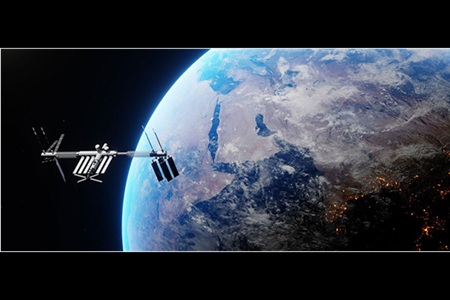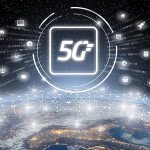Under a new cooperation agreement, Qatars satellite monitoring facilities will help address international cases of harmful radio frequency interference.

Harmful radio interference occurring tens of thousands of kilometres above Earth can disrupt communications and digital services worldwide. Preventing such disruptions relies on vigilant space monitoring through strategically positioned earth stations.
The International Telecommunication Union (ITU), responsible for overseeing global radio spectrum usage, is continually strengthening its space monitoring network. On 20 February, ITU signed an agreement with Qatars Communications Regulatory Authority (CRA) to enhance this effort by incorporating data from Qatars national monitoring stations.
Under the agreement, CRA will provide cutting-edge satellite monitoring facilities to help detect and mitigate harmful radio frequency interference, in accordance with Article 15 of the ITU Radio Regulations. Qatars six earth stations are equipped to monitor interfering radio emissions impacting satellites in geostationary orbit35,785 km above the equator and within Qatars observational rangeas well as non-geostationary satellites operating in the Ku and Ka frequency bands.
These enhanced space monitoring capabilities will continue to ensure the high reliability of satellite communications and other space services around the world, noted Mario Maniewicz, Director of the ITU Radiocommunication Bureau, on signing the latest cooperation agreement. This supports the interference-free operation, not only of current systems but also of innovative future systems.
Decisions adopted at ITUs last World Radiocommunication Conference (WRC?23) and taking effect at the start of this year have made way for accelerated innovation and new telecom services while protecting existing radio spectrum uses, such as TV broadcasting and scientific research.
This Memorandum of Understanding reflects Qatars ongoing commitment to ensuring an interference-free environment for space communications, said Engineer Ahmad Abdulla Al Muslemani, President of CRA. We are well-positioned to assist ITU in detecting and resolving harmful interference, which is crucial for maintaining the reliability of global telecommunications services. This partnership strengthens Qatars role in international spectrum management and reinforces our dedication to upholding ITUs regulatory standards.
ITU working closely with its 194 member states, the space industry, and space organisations globally collects and processes reports of harmful interference in all sorts of radiocommunications. Its responsibilities as a United Nations specialised agency include stewardship of the Radio Regulations, the binding international treaty that governs radio-frequency spectrum use.
The Radio Regulations define radio frequency interference as the effect of unwanted energy due to one or a combination of emissions, radiations, or inductions upon reception in a radiocommunication system, manifested by any performance degradation, misinterpretation, or loss of information which could be extracted in the absence of such unwanted energy.
Rapid growth and expansion of satellite connectivity means increased risks of interference, making international coordination increasingly crucial for reliable space services and satellite communications.
The cooperation agreement with Qatar leverages ITU satellite monitoring capabilities at a time when spectrum sharing and satellite deployments are on the rise, said ITUs Head of Space Strategy and Sustainability, Jorge Ciccorossi.
ITU has signed similar agreements with Belarus, Brazil, China, Germany, Oman, Pakistan, the Republic of Korea and Vietnam.
In combination with monitoring stations in those countries, ITUs Satellite Interference Reporting and Resolution System (SIRRS) enables governments, satellite operators, space agencies, and other organisations via their respective national administrations to report any harmful interference affecting space services. This makes ongoing and new cases easier to track, analyse and resolve, as well as building up ITUs extensive incidence repository.
Multiple Earth-based stations observe how satellite systems in different orbits utilize the radio spectrum. Operated primarily by national governments, these facilities enable ITU to react whenever harmful interference affects a satellite network.
If a national administration reports an incident to the ITU Radiocommunication Bureau, the source of interference can be geolocated by one or more space monitoring stations and checked against ITUs growing SIRRS database, normally resulting in a prompt resolution.
Unresolved investigations are referred to the Radio Regulations Board, a 12?member ITU body that helps uphold the Radio Regulations between world radiocommunication conferences.
Successive agreements on space monitoring between ITU and national governments follow ITU Resolution 186, aimed at strengthening transparency and confidence-building measures in outer space activities.
The 20 February memorandum with Qatar is another example of excellent cooperation between member states and ITU in the field of satellite monitoring, concluded Maniewicz.












































































